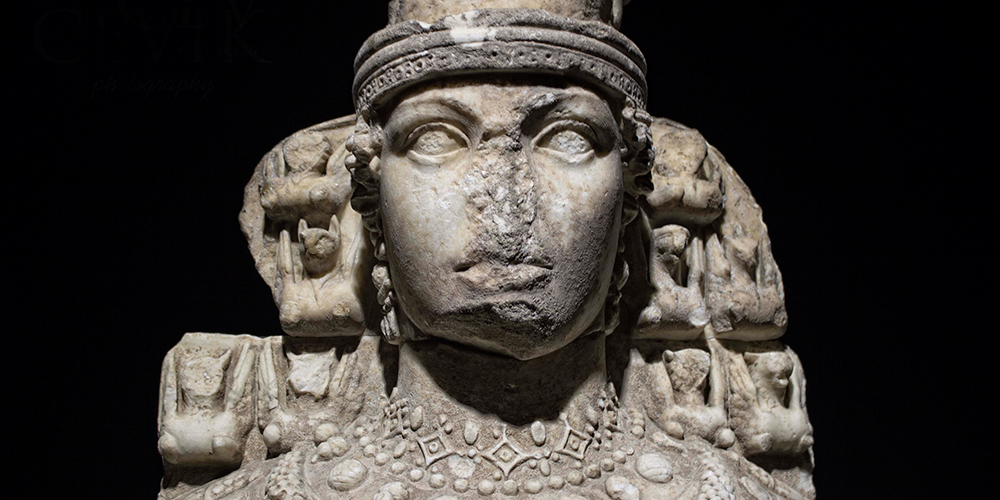The Cult of Mother Goddess does exist worldwide since Neolithic times. But the Mediterranean and especially Anatolia’s Earth Mother shows an exceptional lastingness and reflects in the Monotheistic Religions until modern times.
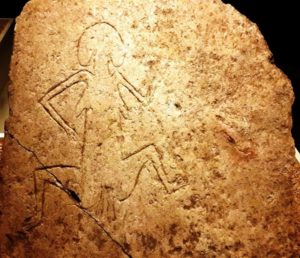 |
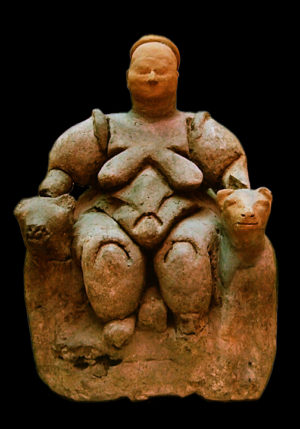 |
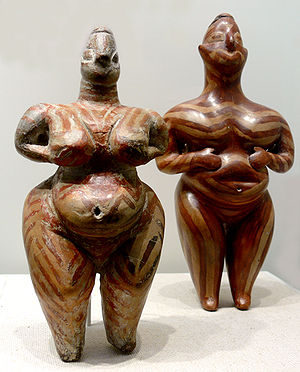 |
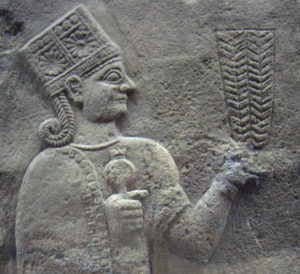 |
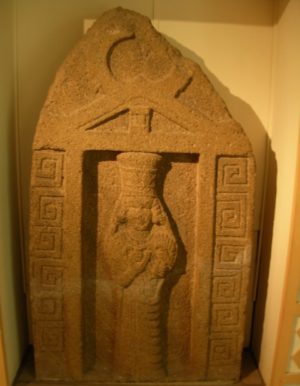 |
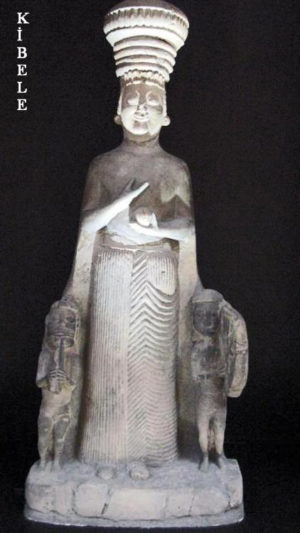 |
| |
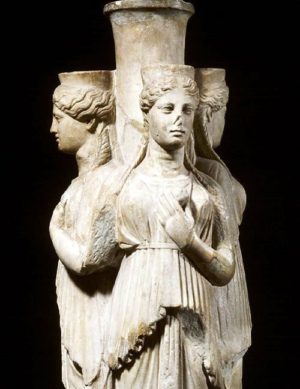 |
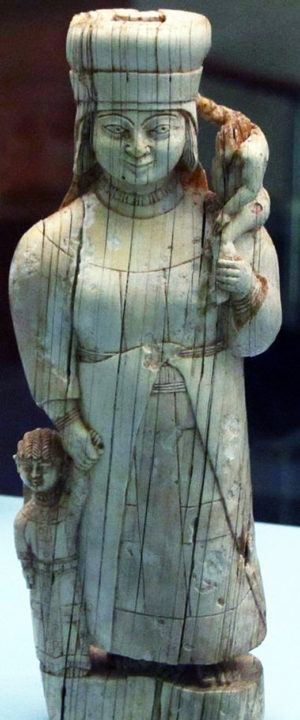 |
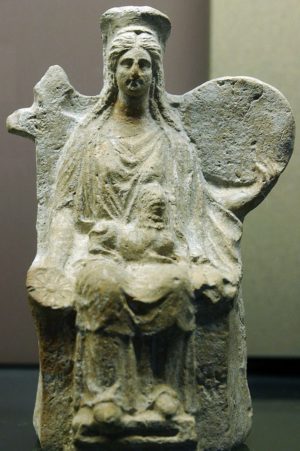 |
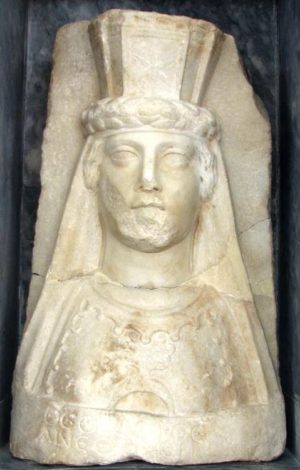 |
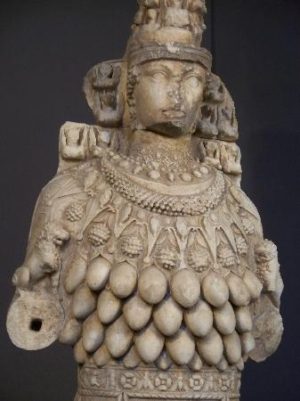 |
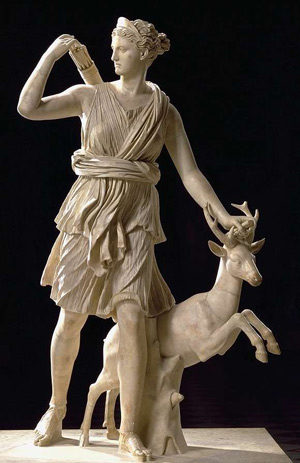 |
There is a strong estimation that the story of the Anatolian woman appears as a Goddess since the Neolithic age, progressing to Hattia, Hittite Kubaba, Phyrg Cybele, turning to Carians Hekate, than Aphrodite and raised to Artemia, finally to Virgin Mary..
Her names, shape and powers have been changing through time and cross cultural interactions. But her basic persona, as the protector of all the life and fertility, usually as a virgin had remained still..
Besides, plenty of moon temples were explored in Anatolia, mostly related with the mother goddess. While the sun and the bull was associated with the masculine principle, the moon and water cult was usually associated with the goddess. Because the moon, just as the female, has a cyclic character.
If you are interested in the history of the Earth Mother, Anatolia has much to say on this outstanding Cult. Indeed the whole country is full of impressive relics about the Mother Goddess and related, reflected beliefs..
16000 YEARS OLD WOMAN FIGURINE
Archeologists of Turkey, have recently unearthed an 16,000 year-old mother goddess figurine during excavations in DIREKLI CAVE close to Kahramamaras province. This fired clay goddess figurine being the eldest in Mesopotamia, Anatolia and Near East, may be a strong indication that the social status of women was very important 16,000 years ago.
8000 BCE
In pre-Neolithic and Neolithic Anatolia there were several cultures to which belong female figurines associated with felines. The earliest yet found is (the probably ritual site of) GOBEKLITEPE, in southeastern Turkey, in which a “display” sort of female figure, dating to ca. 8000 BCE, was found carved on rock in an area between pillars containing depictions of felines.
7000 BCE – CATALHOYUK
The double mound of Catalhoyuk, 45 kilometers south of modern Konya, dates from the eighth to the sixth millennia BCE. The famous figurine found at Çatalhoyuk, (Archaeological Museum- Ankara), is generally conceded to depict a corpulent and fertile Mother Goddess in the process of giving birth while seated on her throne, which has two hand rests in the form of feline (leopard or panther) heads. The similarity to later iconography of the Anatolian Mother Goddess is striking.
MISTRESS OF ANIMALS
Here was the human-beast interface developed into the image of a woman with wild cats, the “Mistress of Animals.” This was the form in which the earth mother would continue to be known through the ages. Just as described in the Homeric Hymn to the Mother of the Gods, which dates from the earliest stratum of Greek literature..
ευαδεν ηδε λυκων κλαγγη χαροπων τε λεοντων
ουρεα τ’ ηχηεντα και ‘υληεντες εναυλοι.
the cry of wolves and bright-eyed lions,
the echoing mountains and the wooded glens.
• HACILAR, near Lake Burdur, west of Çatalhoyuk, was a culture with aceramic to Chalcolithic levels (ca. 7000-5000 BCE); from level VI were found small naturalistic female figurines associated with leopards.
• Objects unearthed at such ancient settlements as CAYONU and NEVALI CORI in southeastern Anatolia forms reliable data that these people’s beliefs were centered on a fertility cult in which the woman was the predominant element.
KULTEPE’S SUN GODDESS
Moving to the Bronze Age, at the end of the 4th millennium B.C., the mother goddess was now associated with the SUN, as we can see from finds at KULTEPE near Kayseri in Cappadocia; where the sun goddess and her family had come to dominate the pantheon.
KUBABA
The Hititite pantheon can be characterized as a tolerant polytheism that included not only indigenous Anatolian deities but also Syrian and Hurrian divinities. The oldest god was Hattia, who lead the king to victory in battle. Later, especially in 13th century BC under the influence of Queen Puduhepa, Hurrian deities entered the pantheon and the leading Hurrian pair, Teshub and Hebat, were identified with their Hittite counterparts, the goddess taking a subordinate place.
In the royal archives of the Hittite Capital at BOGAZKOY (ancient Hattusha), in texts dating from 1500-1190 BCE, KUBABA is named in lists of deities, mainly in a context of Hurrian deities and rituals. Kubaba has a cult of her own in the Hittite city of Hattusha. It is in the ancient city of Carchemish, a Hittite fortress, and in cities dependent to Carchemish that she seems to be an important goddess, from ca.1050 BCE to ca. 850 BCE. She sits on a throne under which reclines a lion, and she is also depicted in a battle scene, accompanied by lions.
In Hittite mythology, the chief goddess Hepat, the sun goddess of the city of Arinna, undoubtedly was a later embodiment of the already ancient mother goddess of Anatolia. After the collapse of the Hittite Empire the Phrygians, who had established a kingdom in Central Anatolia, also adopted Anatolia’s ancient cult of the mother goddess, transforming the Late Hittite chief goddess Kubaba into the Phrygian Cybele.
CYBELE
Shortly thereafter, we find the Mother of the Cybileian mountains in Phrygia. Cybele (Phrygian: Matar Kubileya/Kubeleya “Kubeleyan Mother”, perhaps “Mountain Mother”) was the Phrygian deification of the Earth Mother. As with Greek Gaia (the “Earth”), or her Minoan equivalent Rhea, Cybele embodies the fertile Earth, a goddess of caverns and mountains, walls and fortresses, nature, wild animals (especially lions and bees). Phrygian Cybele is often identified with the Hittite-Hurrian goddess Hebat, though this latter deity might have been the origin of only Anatolian Kubaba.
Cybele was a powerful goddess, who existed long before the “birth” of Zeus, and she would have been worshipped in that area from antiquity, so this new legend may contain elements of much older myths that have been lost — such as the trees that turned into sea nymphs.
Followers of Cybele, the Phrygian Corybantes, expressed her ecstatic and orgiastic cult in music, especially drumming, clashing of shields and spears, dancing, singing, and shouting—all at night.
“Together come and follow to the Phrygian home of Cybele, to the Phrygian forests of the goddess, where the clash of cymbals ring, where tambourines resound, where the Phrygian flute-player blows deeply on his curved reed, where ivy-crowned maenads toss their heads wildly.” Says Catullus in his famous poem..
The worship of Cybele spread from inland areas of Anatolia to the Aegean coast, to Crete and other Aegean islands, and to mainland Greece. In 203 BCE, Rome adopted her cult as well.
If the theory on the Luwian origin of Cybele’s name is correct, Kubaba must have merged with the various Matar Goddesses well before time the Phrygian Matar Kubileya inscription was made around the first half of the 6th century BCE
CARIANS
Where the role of women is concerned, the Carian Kingdom in Anatolia stands out, ruled on several occasions by queens, such as Artemisia I and II, after the death of their husbands. Queen Appollonis, wife of Attalos I of Pergamum and Queen Sinope and Queen Amastris of the Black Sea region in the 3rd century B.C. were famous as patrons as well as rulers.
The sophisticated Carian Goddess HEKATE was nurturer of the young, a protector of cross roads, and was also worshipped in luminal places. There was certainly an affinity between Hekate and Artemis Ephesia, as evidenced by a shrine or statue of Hekate located in the Artemision. Ephesos’ closeness to Caria, which is Hekate’s homeland, and the fact that the Greek city was founded on an older Carian settlement, which already had a temple to the Carian goddess, provide strong evidence that the two goddesses were conflated.
MOUNT SIPYLUS
Greek mythographers recalled tha
t Broteas, the son of Tantalus, was the first to carve the Great Mother’s image into a rock-face. At the time of Pausanias (2nd century CE), a sculpture carved into the rock-face of a spur of Mount Sipylus was still held sacred by the Magnesians.
ARTEMIS THE LYCIAN
Leto, Apollo and Artemis were worshiped above all other deities and by far the most important religious sanctuary in Lycia. A city was dedicated to LETO, called Letoon, in the Xanthos valley. It was the sacred cultic center of Lycia and Leto was the prime deity worshiped there, but in later dates her two twin children Apollo and Artemis were given equal importance. Letoon is undoubtedly of great antiquity and may go back to the 7th century B.C. Three temples stand here dedicated to Leto and her two children. As the national sanctuary of Lycia, national festivals were held here and the sanctuary’s priests were the highest priests of the Lycian Union. Other Lycian shrines to Leto exist in Calinda and Psychus (northwest Lycia) but neither of them were as famous or important as that of Letoon which was well-known in the ancient world.
It is believed that Leto was one manifestation of the wide-spread mother-goddess religion which originated in Anatolia and spread throughout the ancient world. Most likely, the worship of Leto began alongside that of an older mother goddess (Eni Mahanahi in Lycia) at Letoon and later superseded the older goddess.
The Cult of Leto was mostly concentrated along the western regions of Anatolia’s southern shore. In Lycia she was worshiped as a national and family deity, as well as the guardian of the tomb.
Leto’s name may be related to “lada” which is Lycian for “woman” or “wife”. Leto cults also existed in Halicarnaussus, Cnidus, Phrygia, Caria and Cilicia.
ARTEMIS ELEUTHERA
In the Iliad, Homer mentions Apollo as “Phoibos”, which means ‘illuminated’, and ‘the famous Lycian archer, Apollo.’ Apollo along with his Anatolian sister, Artemis, aided the Trojans. Artemis is considered to be a continuation of mother-goddess religion, under a new name. Apollo’s sister Artemis had a cult center in the important Lycian city of Myra. Myra’s main cult was dedicated to Artemis Eleuthera, a distinctive form of Cybele, the ancient mother-goddess of Anatolia. She had a magnificent temple in Myra, but it was heavily damaged in the earthquake of 141 AD. An inscription on the heroum of the Lycian leader Opramoas indicates that he contributed the necessary funds for reconstruction of the temple that was famous as Lycia’s most splendid building. It occupied large grounds with beautiful gardens and had an inner court defined by columns, an altar and a statue of the goddess. Artemis was also worshipped (among other places) at Arycanda, in the forms of Artemis Kombike, Lagbene, Tharsenike and Eleuthera.
Unfortunately, St. Nicholas, the bishop of Myra, took strong measures against paganism. The temple of Artemis was among many other temples in the region that he destroyed. It is said that the very foundations were uprooted from the ground, so complete was its destruction, “and the evil spirits fled howling before him.”.
ATHENA
Called Malija in the Lycian language, she was also an important deity in Lycia. She is found in many inscriptions, especially at Tlos, Xanthos, Letoon, Tyberissos, and Arneai. Malija seems to be a deity of much antiquity and has been found in ancient Hittite texts. On Lycia coinage she is featured in the Greek form as Athena. Malija/Athena may have had a cult center at Xanthos and she was the goddess responsible for punishing the violators of tombs.
THE PROTOTYPE
Later, under Hellenic influence along the coastal lands of Asia Minor, the sculptor Agoracritos, a pupil of Pheidias, produced a version of Cybele that became the standard one. It showed her still seated on a throne but now more decorous and matronly, her hand resting on the neck of a perfectly still lion and the other hand holding the circular frame drum, similar to a tambourine, (tymbalon or tympanon), which evokes the full moon in its shape and is covered with the hide of the sacred lunar bull.
APHRODITE
In Greek mythology, Aphrodite was the goddess of love, beauty, and fertility. She was either the daughter of Zeus and Dione, or she emerged from the sea foam. Married to Hephaestus, she loved and had children by other gods and mortals, e.g., Aphrodite was awarded the apple of discord by Paris, leading to the Trojan War. The Romans identified her with Venus. Aphrodite, the goddess of love and beauty in Greek mythology, appears in the role of mother with her son Eros in many works of art. Aphrodisias and Knidos with her round temple are beautiful sites related to the Goddess of Love..
EPHESIAN ARTEMIS
The cult of the mother goddess which had existed in Anatolia since the Neolithic Age dominated religious life in Ionic settlements such as Ephesus in the 6th century B.C., where Artemis was the latest embodiment of the mother goddess. Test holes have confirmed that the site of the temple of Artemis in Ephesus was occupied as early as the Bronze Age.
Artemis was the Ionia (Greek) goddess, the virginal huntress and twin of Apollo, who substituted for the Titan Selene as Goddess of the Moon. At Ephesus, Artemis was passionately venerated in an archaic, certainly pre-Hellenic cult image that was carved of wood, and kept decorated with jewelry. Most similar to Near-Eastern and Egyptian deities, and least like Greek ones, her body and legs were enclosed within a tapering, pillar-like enclosure from which her feet protrude, and her breast was covered with many egg-shaped forms. She wears a mural crown (like a city’s walls), an attribute of Cybele. Shrines, bulls’ horns, and goddess images were found in her temple, showing t
he continuation linked to other mother goddesses of classical times like Artemis (whose cult flourished at Ephesus, and thus preceded that of the Christian Mary, who was imaged there with a crescent moon, just as her predecessor), Cybele and Aphrodite.
However, depictions of the Lady of Ephesus varied greatly over time. As demonstrated by her connection with Anaiti, Artemis Ephesia had a strong association with water. Bengisu calls Artemis Ephesia a “protectress of water sources, lakes and marshes” and reports that originally her worship may have been connected with a fish cult.
Perhaps the legend of the Amazons’ connection with the cult of Artemis Ephesia further serves to identify the goddess with (young) women who have not (yet) taken on their normative social function as wives and mothers. The Amazons were a mythical race of female warriors who come from remote Pontic Asia Minor. Callimachus writes of how the Amazons were actually the founders of the cult; they set up an image of the goddess under an oak tree and performed a war-dance around it, where later a sanctuary was built.
The Temple of Artemis was located in an economically robust region, visited by merchants and travelers from all over Asia Minor. Influenced by many beliefs, the temple was as a symbol for peoples of all faiths from many lands. It was also known as the Temple of Diana, the equivalent Roman goddess to Artemis.
The temple was said to be a fantastic structure made of marble, with gold and silver decoration and the finest art and statuary of the age. It was burned down on July 21, 356 B.C.E. by agents of a man called Herostratus, who reportedly sought worldwide fame by destroying the world’s most beautiful building. It was later rebuilt several times. Its ultimate destruction occurred at the hands of a Christian mob led by St. John Chrysostom, then archbishop of Ephesus, in 401 C.E.

